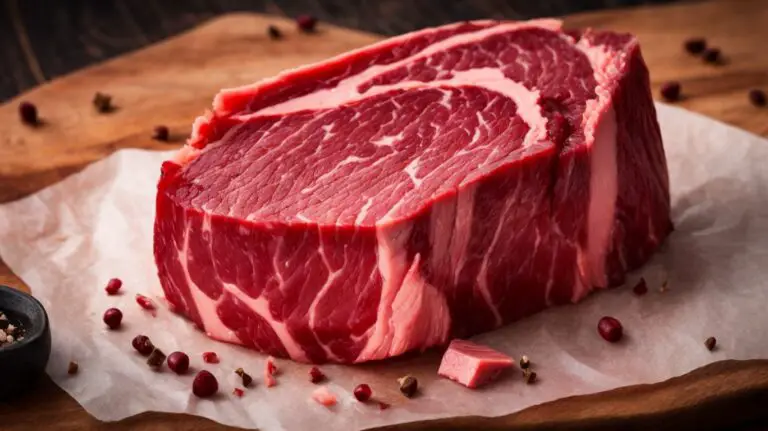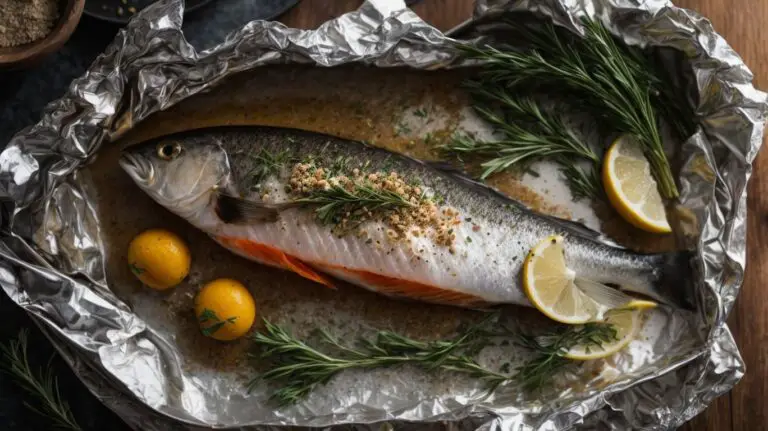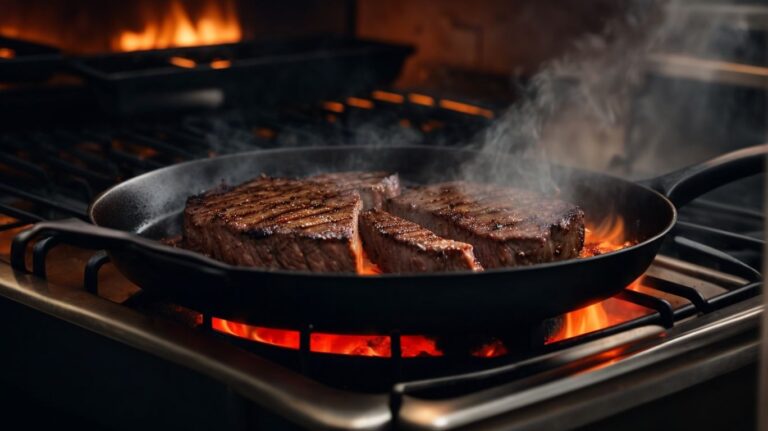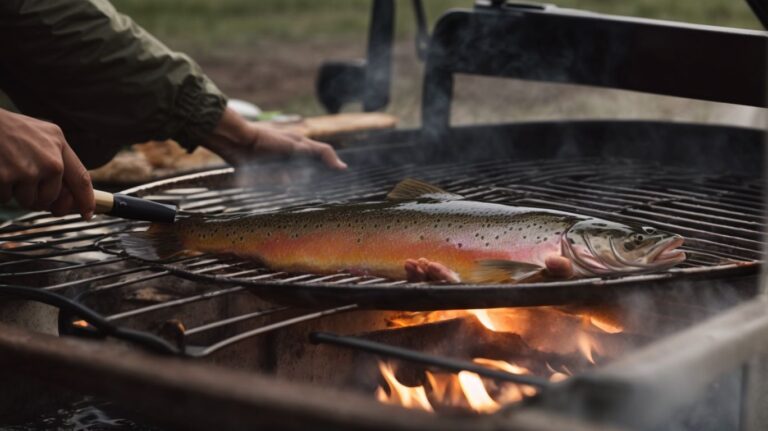How to Cook a Turkey With Butter Under Skin?
Are you looking to take your Thanksgiving turkey to the next level this year?
One simple yet effective technique to elevate the flavor and juiciness of your turkey is to use butter under the skin.
We will explore the reasons why using butter under the skin can make a difference in your turkey, the benefits it provides, and how to properly prepare and cook a turkey with butter under the skin.
Whether you’re a seasoned chef or just starting out, this step-by-step guide will help you achieve a perfectly cooked turkey that will wow your guests.
Let’s get cooking!
Key Takeaways:
Why Use Butter Under the Skin?
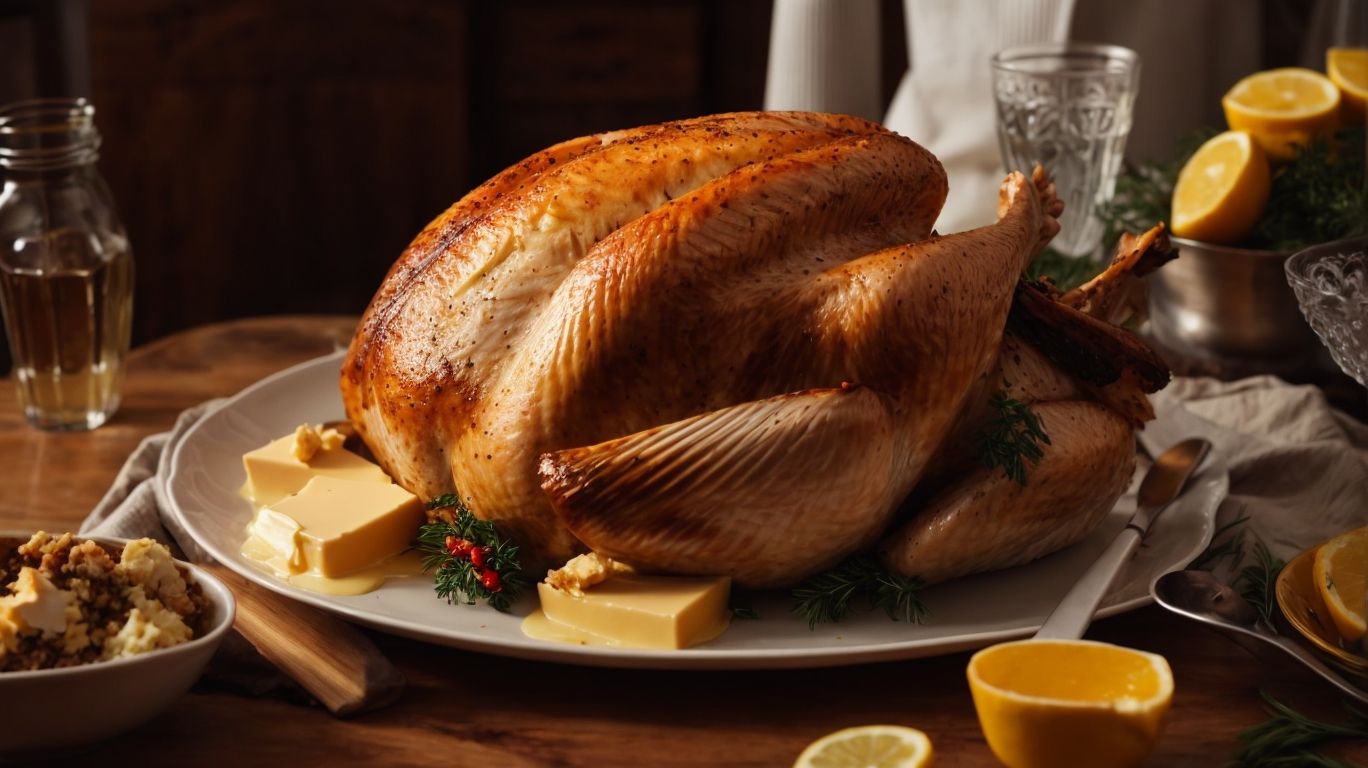
Credits: Poormet.Com – Larry King
Butter under the skin of a turkey serves as a flavorful baste that keeps the meat moist during cooking, resulting in a succulent and tender roast turkey.
When you apply herb butter under the turkey’s skin, the flavors from the herbs and seasonings infuse into the meat as it cooks, enhancing the overall taste profile. Not only does this method add an extra layer of flavor to the meat, but it also contributes to the juiciness of the turkey. The butter acts as a natural tenderizer, ensuring that the meat remains moist and juicy throughout the roasting process.
Creating an herbed butter mixture allows you to customize the flavors according to your preferences. You can experiment with various herbs such as rosemary, thyme, sage, or parsley, along with garlic, citrus zest, or spices to tailor the taste to your liking.
How Does Butter Under the Skin Affect the Flavor of the Turkey?
The herb-infused butter under the skin imparts a rich, aromatic flavor to the turkey, enhancing its taste profile with a blend of fresh herbs and seasonings.
When preparing herb butter, opting for fresh herbs is crucial as they offer a more vibrant and intense flavor compared to dried alternatives. Mix finely chopped herbs like rosemary, thyme, sage, and parsley with softened unsalted butter to create a fragrant and savory concoction.
Experiment with different herb butter recipes to cater to your taste preferences. From garlic-infused herb butter to citrus-herb blends, the options are endless. The herb butter not only adds moisture to the turkey but also acts as a flavor enhancer, making each bite burst with delicious herbaceous notes.
What are the Benefits of Using Butter Under the Skin?
Using butter under the skin not only adds flavor but also helps in keeping the turkey meat tender and juicy, resulting in the best possible roast turkey.
One of the key advantages of incorporating herb butter under the turkey’s skin is how it infuses the meat with a burst of aromatic flavors as it melts. The herb-infused butter not only enhances the taste but also contributes to the overall tenderness of the meat during the cooking process. By creating a barrier between the meat and the heat source, the butter helps to lock in moisture, ensuring that the turkey stays succulent and flavorful.
Preparing the Turkey for Cooking
Before cooking, it’s essential to properly prepare the turkey by thawing it, brining for added moisture, and seasoning it to enhance its natural flavors.
Thawing the turkey correctly is crucial to ensure even cooking and prevent the growth of harmful bacteria. The recommended method is to thaw the turkey in the refrigerator, allowing approximately 24 hours for every 4-5 pounds of turkey. If you are short on time, you can use the cold water method by submerging the turkey in cold water, changing the water every 30 minutes.
In terms of brining, this process involves soaking the turkey in a solution of water, salt, sugar, and various herbs and spices. The brine helps to tenderize the meat and infuse it with additional moisture and flavor. It’s important to brine the turkey for a sufficient amount of time, typically around 12-24 hours depending on the size of the bird.
Seasoning the turkey is the final step to elevate its taste profile. You can create a dry rub using a mix of herbs, spices, and aromatics to coat the turkey inside and out. Alternatively, you can opt for a wet seasoning by blending herbs and garlic with olive oil or butter to create a flavorful paste. Ensure that the seasoning is evenly distributed to achieve a perfectly seasoned turkey when cooked.
How to Thaw a Frozen Turkey
Thawing a frozen turkey properly involves allowing it to reach room temperature gradually and letting it rest before cooking to ensure even cooking and juiciness.
In terms of thawing your frozen turkey, the safest method is to plan ahead for the lengthy process. Start by placing the turkey in the refrigerator, allowing it to defrost slowly over a period of a few days depending on its weight. Remember, for every 4-5 pounds of turkey, you need to allot a full day for thawing. This slow and steady approach helps maintain the integrity and safety of the meat, reducing the risk of bacterial growth.
Important: Avoid thawing the turkey at room temperature or in warm water as this can promote bacteria growth and compromise the quality of the meat. Patience is key when it comes to thawing a turkey to ensure a delicious and safe outcome!
How to Brine a Turkey
Brining a turkey with a mixture of kosher salt, herb butter, and low-sodium chicken broth enhances the meat’s juiciness and imparts additional flavor for a delicious end result.
Begin by dissolving the kosher salt in warm water to create the brine solution. This mixture helps to tenderize the meat and keep it moist during roasting. The herb butter adds aromatic richness, infusing the turkey with savory notes that deepen its flavor profile. Combining these ingredients with the chicken broth creates a well-rounded brine that ensures a juicy and flavorful turkey. Allow the turkey to soak in this brine solution for several hours to overnight, allowing the flavors to penetrate the meat thoroughly.
How to Season the Turkey
Seasoning the turkey involves rubbing herb butter under the skin, seasoning with herbs and spices, and stuffing the cavity with roasted vegetables for added flavor and moisture.
To create the herb butter, start by softening unsalted butter and stirring in chopped herbs like rosemary, thyme, and sage. Once mixed, gently lift the turkey skin and spread a generous amount of this fragrant butter underneath, ensuring it covers the meat evenly.
Next, prepare a blend of dried herbs such as parsley, oregano, and marjoram mixed with kosher salt and black pepper. Rub this mixture over the entire surface of the bird, allowing the flavors to seep in. Stuff the turkey cavity with a medley of roasted vegetables like carrots, onions, and celery to infuse the meat with savory goodness during cooking.
How to Properly Place Butter Under the Skin
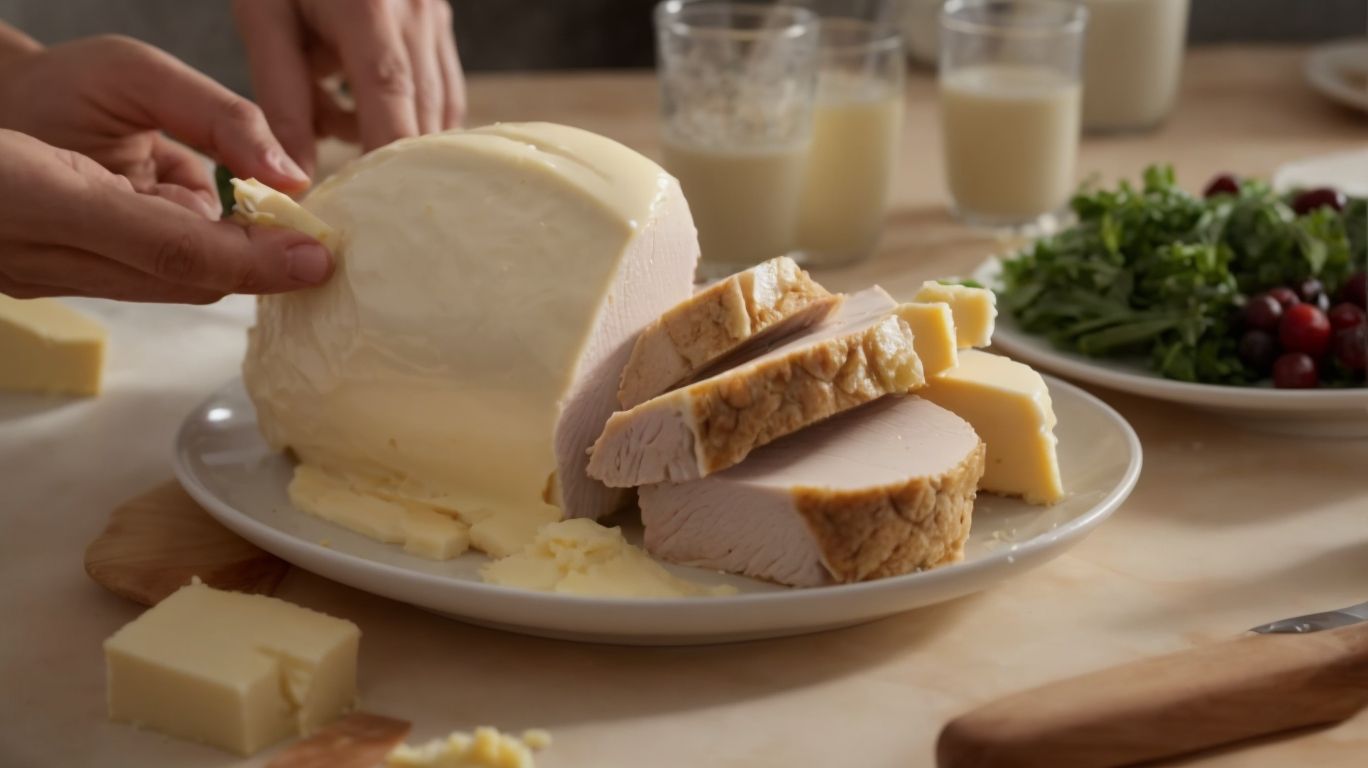
Credits: Poormet.Com – Arthur Hall
Placing herb butter under the skin of the turkey involves carefully lifting the skin, spreading the butter mixture evenly, and ensuring it is finely chopped or melted for even distribution.
Before you start, ensure your herb butter is at the right consistency. If it’s too firm, gently melt it to a spreadable consistency. Then, with clean hands, lift the skin of the turkey starting at the neck end, being careful not to tear it. Create pockets between the skin and the meat by running your fingers gently underneath. Next, take small amounts of the herb butter and distribute it evenly under the skin by pushing it towards the breast and thigh areas. This method allows the flavors to infuse the meat while keeping it moist during cooking!
Step-by-Step Guide to Placing Butter Under the Skin
The step-by-step guide to placing herb butter under the skin involves gently separating the skin from the breast meat, applying the herb butter mixture underneath, and massaging to ensure even coverage.
Once you have carefully loosened the skin from the breast meat, it’s time to prepare the herb butter mixture. Create a blend of softened butter, minced herbs such as rosemary, thyme, and sage, along with salt and pepper for added flavor.
After you’ve mixed the ingredients, use your fingers or a spoon to carefully slide the herb butter mixture under the loosened skin. Be gentle to avoid tearing the skin, ensuring the butter reaches all parts of the breast meat for maximum flavor infusion.
Once the herb butter is in place, gently massage the skin to spread the mixture evenly. This step helps in distributing the herbs and seasoning throughout the meat, ensuring a flavorful and juicy roast turkey. Take your time to massage thoroughly to guarantee that every bite is bursting with herb-infused flavor.
Tips for Ensuring Even Distribution of Butter
To ensure even distribution of herb butter, let it come to room temperature, cover the turkey loosely with foil, and periodically baste during cooking for a moist and flavorful herb butter turkey.
When bringing the herb butter to room temperature, make sure to plan ahead and take it out of the fridge well in advance to soften. Softened butter will be much easier to spread evenly under the turkey’s skin.
Covering the turkey loosely with foil serves a dual purpose – it helps retain moisture and prevents the butter from burning in the initial stages of cooking. Remember not to tightly seal the foil; leave some space for the steam to circulate.
As the turkey roasts, basting it with the delicious herb butter mixture not only adds flavor but also helps keep the meat moist throughout the cooking process. Use a baster or a spoon to scoop up the juices and drizzle them over the turkey every 30-45 minutes.
Cooking the Turkey with Butter Under the Skin
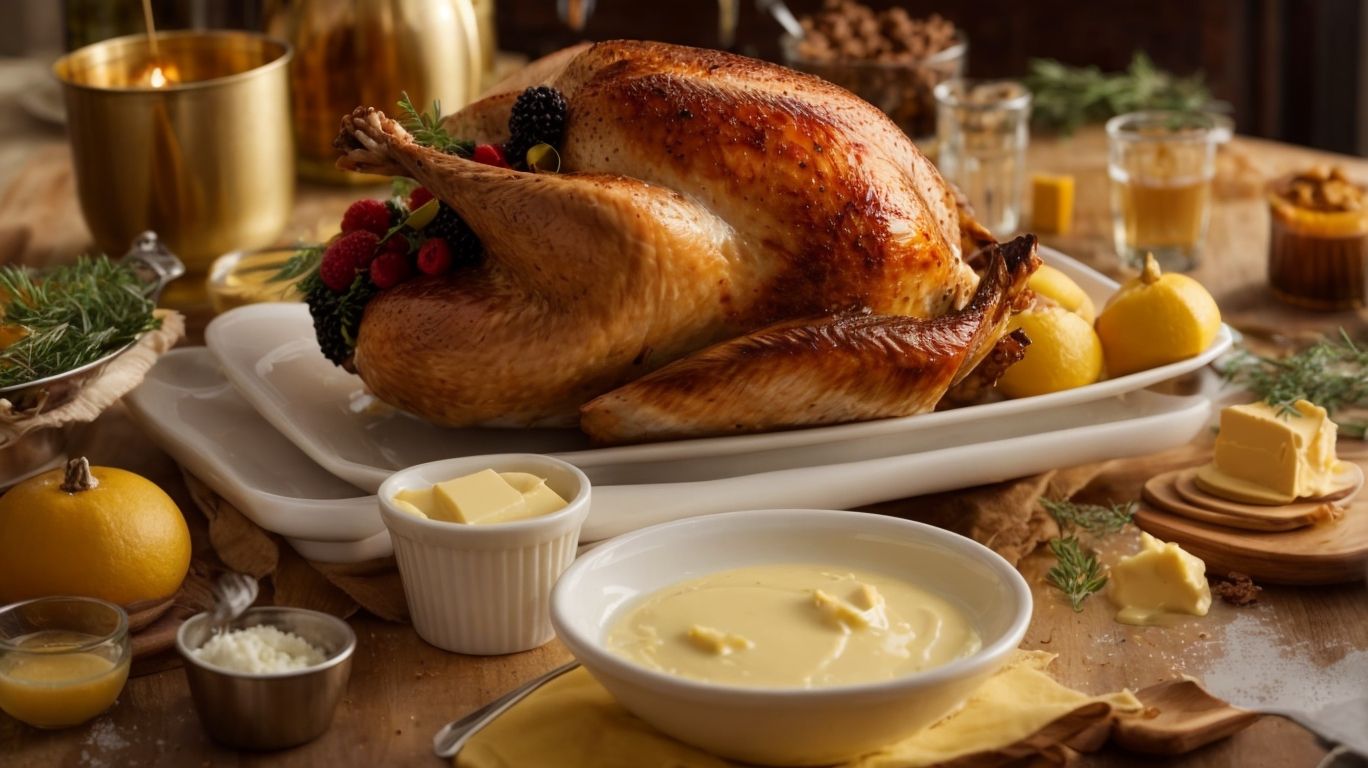
Credits: Poormet.Com – Christian Smith
Cooking the turkey with herb butter under the skin involves roasting it in the oven to perfection, creating flavorful pan drippings that can be used for a delicious gravy base in the roasted turkey recipe.
First and foremost, to ensure the turkey is juicy and full of flavor, prepare a herb butter mixture consisting of thyme, rosemary, garlic, and butter. Gently lift the skin of the turkey and generously spread this herb butter underneath, allowing the flavors to infuse the meat.
Next, tie the turkey’s legs together with kitchen twine to ensure even cooking. Place the turkey on a roasting rack in a roasting pan, breast side up. This positioning allows the skin to crisp up nicely and the heat to circulate evenly.
When roasting, start at a high temperature to crisp the skin, then reduce the heat to cook the meat thoroughly without drying it out. Baste the turkey occasionally with the pan drippings to enhance the flavors and keep the meat moist.
How to Roast the Turkey in the Oven
Roasting the turkey in the oven at a specified temperature and time, ensuring it is cooked through while maintaining moisture and tenderness, is essential for a perfect Thanksgiving turkey recipe.
Begin by preheating your oven to the desired temperature; usually, around 325°F (165°C) works well for roasting a turkey.
While the oven is heating up, preparing the turkey for roasting is crucial. Make sure to remove the giblets from the cavity and pat the turkey dry with paper towels.
Season the turkey generously with your preferred blend of herbs, spices, and salt. This will not only enhance the flavor but also create a beautiful golden crust on the outside.
When placing the turkey in the oven, use a roasting pan with a rack to allow air circulation around the turkey.
Cover the turkey loosely with foil for the first few hours to prevent the skin from getting too dark, then remove the foil to let it brown in the last hour of cooking.
Timing is key; a general rule is to cook the turkey for about 13-15 minutes per pound. Use a meat thermometer to ensure the internal temperature reaches 165°F (74°C) in the thickest part of the turkey to guarantee it is safely cooked.
Once the turkey is done, let it rest for at least 15-20 minutes before carving. This allows the juices to redistribute, resulting in a moist and flavorful turkey ready to be served.
How to Cook the Turkey on the Grill
Cooking the turkey on the grill requires careful monitoring of the meat’s doneness, basting with herb butter for flavor, and adjusting heat levels to ensure a perfectly grilled turkey with a delightful herb butter essence.
As the turkey cooks on the grill, it’s crucial to regularly check the internal temperature using a meat thermometer to guarantee that it reaches the recommended safe temperature for consumption. The basting process involves using a flavorful herb butter mixture that not only adds moisture to the meat but also infuses it with aromatic herbs and spices. Regulating the heat on the grill ensures that the turkey cooks evenly without burning, allowing the herb butter to caramelize gently and create a mouthwatering crust on the exterior.
How to Use a Slow Cooker for Turkey with Butter Under the Skin
Utilizing a slow cooker for turkey cooked with herb butter under the skin involves incorporating a flavorful carrot-onion-celery mixture, using turkey thighs for succulence, and adding roasted vegetables for a complete and convenient meal.
When preparing the turkey, it’s crucial to ensure that the herb butter is generously spread under the skin to infuse the meat with delicious flavors during the slow cooking process. The aromatic blend of carrots, onions, and celery not only enhances the taste of the dish but also provides a bed of flavors for the turkey to cook on.
Choosing turkey thighs over other cuts ensures tender and juicy meat that easily shreds apart, creating a melt-in-your-mouth experience that is characteristic of slow cooker recipes. The dark meat of the thighs offers a richer flavor profile that complements the earthy herbs and veggies.
Incorporating roasted vegetables alongside the turkey adds a textural contrast and depth of flavor to the meal. The caramelization that occurs during roasting brings out the natural sweetness of vegetables like carrots, potatoes, and Brussels sprouts, making them a delightful accompaniment to the savory turkey.
Final Tips and Tricks for Perfectly Cooked Turkey with Butter Under the Skin
For a perfectly cooked turkey with herb butter under the skin, allow the turkey to rest, cover loosely with foil to retain heat, and ensure any leftover turkey is stored properly to maintain freshness.
In terms of achieving that juicy, flavorful turkey, taking the time to let it rest after cooking is key. This allows the juices to redistribute, resulting in a more tender meat. To keep the turkey warm while resting, tent it loosely with foil to prevent heat loss without trapping in too much moisture.
Proper temperature management is crucial throughout the cooking process. Invest in a reliable meat thermometer to ensure the turkey reaches the recommended internal temperature of 165°F (73.9°C). Remember, the turkey will continue to cook as it rests, so factor in this carryover heat.
In terms of storing leftover turkey, avoid leaving it out at room temperature for too long. Refrigerate any uneaten portions within two hours of cooking to prevent bacterial growth.
Frequently Asked Questions
What is the benefit of cooking a turkey with butter under the skin?
Cooking a turkey with butter under the skin helps keep the meat moist and adds flavor to the turkey.
How do I prepare the butter to go under the turkey’s skin?
Soften the butter to room temperature and mix in your desired herbs and spices before spreading it under the skin of the turkey.
Do I need to use a specific type of butter for this method?
No, you can use any type of butter, whether it be salted or unsalted. Just make sure it is soft enough to spread easily.
Can I use other types of fat besides butter for this technique?
Yes, you can use other types of fat such as olive oil or bacon grease, but butter is typically the most popular and traditional choice.
How much butter should I use for a turkey?
The amount of butter will depend on the size of your turkey. As a general rule, 1-2 tablespoons of butter per pound of turkey is a good estimate.
Do I need to baste the turkey if I use the butter under the skin technique?
No, basting is not necessary when using this method. The butter under the skin will keep the turkey moist and flavorful on its own.


